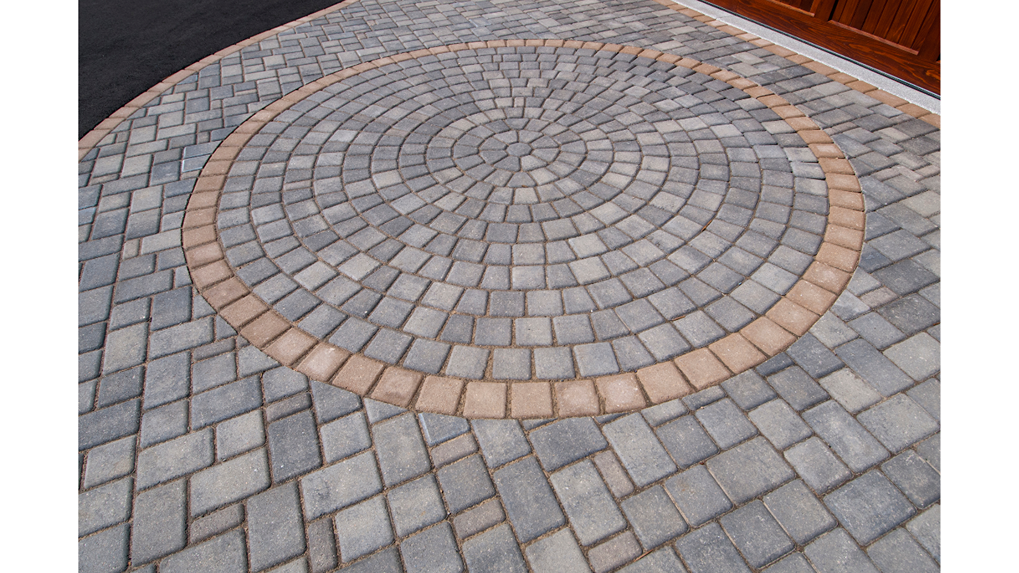When it comes to hardscape landscaping, there are plenty of forms it can take. Some common elements of hardscaping include patios, fire pits, and retaining walls. The beauty of hardscaping is that you can use a multitude of materials to create a landscape that aligns with your personal preferences.
Join our experts as we outline hardscaping, how it works in cohesion with landscaping, and the top materials used for it.
Hardscaping: What is It?
Hardscaping complements gardens and landscapes by introducing equilibrium and emphasis to the softscaping elements. A hardscape pertains to the inanimate aspects within a garden or landscape. It acts as a central feature, defines distinct areas, introduces depth, and contributes to the aesthetic enhancement of a landscape.
While the terms hardscaping and landscaping are often used interchangeably, it’s important to note the distinction. Hardscaping represents just one facet of a comprehensive landscaping scheme for a property. A garden or landscape lacking hardscaping can appear as an endless expanse of untamed vegetation. Conversely, excessive hardscaping and insufficient softscaping can create a stark ambiance. When deciding on a hardscape project, many materials can be used let’s go over some of the common ones in our projects.
Materials Used for Hardscape Landscaping
1. Concrete
Although concrete is known to be a dull, frigid surface, it doesn’t have to be. It frequently undergoes staining, stamping, texturing, or incorporation of materials such as pebbles and sea glass. Textured or embellished concrete offers better traction compared to a smooth and flat surface.
2. Pavers
Pavers come in various materials, with concrete, brick, and flagstone being the most used options. Installing pavers can be relatively straightforward as it involves establishing a stable border to prevent any shifting or displacement. Typically, pavers are placed atop pea gravel and bedding sand, although they can also be positioned on diatomaceous earth (DE), soil, or grass surfaces.
3. Brick
For centuries, brick has served as a versatile construction material, employed in buildings, roads, pathways, walls, and various architectural structures. Bricks feature distinct patterns that can impart either a formal or informal aesthetic to surfaces.
4. Wood
Outdoor decks frequently utilize wood as their primary material. Although wood decks may require diligent maintenance, they remain a favored choice for many due to their inviting, warm appearance, and the natural, tactile experience they provide.
5. Composite Wood
Outdoor decks can also use composite wood, which is plastic; it is made of wood fibers that are molded into plastic boards. This requires less maintenance and holds up better over time. It will not splinter or rot like wood can.
6. Stone
Natural stone enjoys popularity as an appealing option for outdoor patios and courtyards. When working with natural stone, it’s important to consider uneven surfaces, ridges, varying elevations, and different weight characteristics you might be working with. Choose irregular flagstone pieces for a more rustic appearance and precisely cut geometric shapes for a formal ambiance.
7. Tile
Like brick, tile has a longstanding history and is not limited to indoor usage. Outdoor tiles are categorized for different climate conditions, so ensure you choose one that aligns with the climate zone of Dracut, MA.
When you choose Dracut Landscaping to take on your hardscape landscaping project in Massachusetts, we can recommend a type of material that will be best suited for your home and budget.
Get Hardscape Landscaping Services in Dracut, MA, with Dracut Landscaping!
Dracut Landscaping provides comprehensive hardscaping services to homes and businesses in Dracut, MA. Contact us for a quote on our services!


